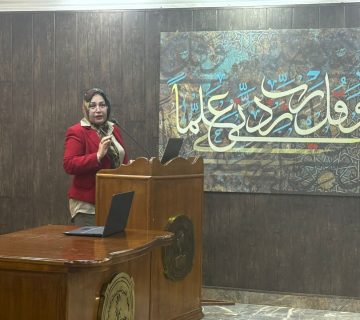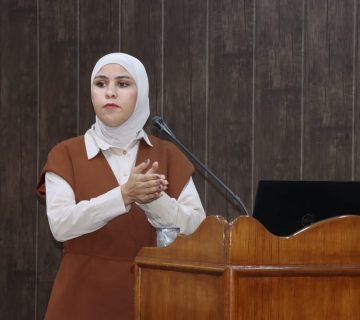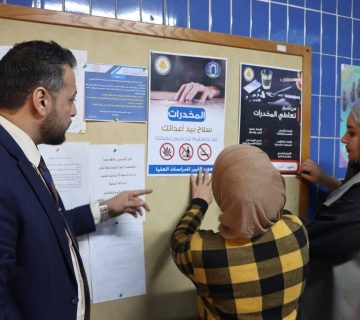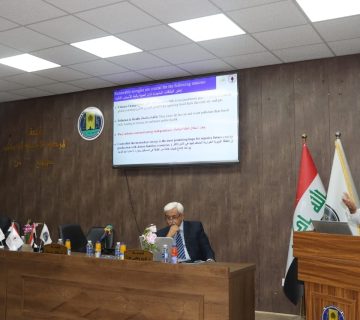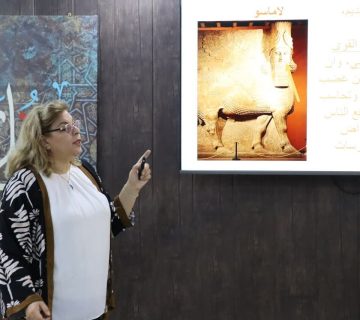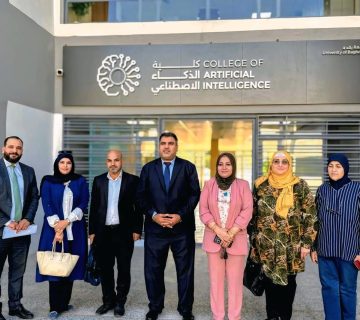The thesis of the master’s student, Nour Ali Doyen, / Laser Applications, was discussed,
Her Thesis is entitled:
“The Effect of Laser-Assisted Aesthetic Crown Lengthening Using 940nm Diode Laser”
The discussion committee consisted of the professors whose names are listed:
1- Prof. Dr. Hussein Ali Jawad / Ph.D. of Physics / Laser / Institute of laser for Postgraduate Studies / University of Baghdad / as a Chairman
2- Asst. Prof. Dr. Alaa Omran Ali / PhD in Dental Surgery and Diseases / College of Dentistry / University of Baghdad / as a Member
3- Asst. Prof. Dr. Hamid Hammadi Onaizi/ PhD in Oral and Dental Surgery/ Maxillofacial Medicine and Surgery and the College of Dentistry/ Anbar University/ as a Member
4- Asst. Prof. Dr. Mohammad Karim Zaher / PhD in Physics / Laser and Electro-optics / Institute of laser for Postgraduate Studies / University of Baghdad/ as a Member and Supervisor
The aim of the study was to evaluate and compare the efficacy of the 940 nm diode laser in cosmetic crown lengthening surgery with the traditional scalpel technique based on clinical observations, patient questions, clinical images, and postoperative gum healing.
This study is dealt with the topic of crown lengthening, which is a surgical technique that places the gingival boundaries in a funnel-like manner, or removes the supporting bones, or both, to increase the structure of the teeth above the gums for therapeutic or aesthetic purposes. The goal of crown lengthening is to improve function and appearance. Crown lengthening requires a comprehensive understanding of the biological view, which must always be maintained
In this randomized clinical study, the crowns of 39 individuals between the ages of 15 and 45 were surgically lengthened. The individuals were divided into two groups for this study. Laser group surgery was performed on 21 subjects, who used a diode laser (940 nm) in continuous wave (CW) mode with power settings of 1 W and had a tip diameter of 400 μm and a tip length of 4 mm. In contrast, the conventional group had 18 patients receive a scalpel for crown lengthening treatments. A visual analog scale is used on the 1st, 3rd, 7th, and 21st postoperative day to measure pain, edema, bleeding, functional interference, tooth sensitivity, aesthetic achievement, overall patient satisfaction based on patient opinion, clinical images, and postoperative gingival healing.
The researcher concluded that cosmetic crown lengthening works to improve the shape of the gum edge. Laser-assisted crown lengthening is a safe and effective alternative to traditional crown lengthening. The diode laser improves operator control, ablation accuracy, and ease of use
One of the most important recommendations of this study was that the 940 nm diode laser was used successfully in aesthetic crown lengthening at specific energy settings. Diode lasers are particularly favorable in terms of operator control, usability, cutting efficiency, and cost and this is related to the following:
1 – The laser allows for a more precise formation of the gums and the precise planning of the gingival margin required for aesthetic crown lengthening
2- Laser surgery has many advantages, including excellent hemostasis and improved vision with little or no bleeding, less invasive, incision cut is sterile, and a periodontal pack is not necessary to cover the surgical site, resulting in less functional interference, and experiencing less pain After surgery and increased patient satisfaction.
-
In the laser group, healing was shown to be faster, with improved aesthetic results.




